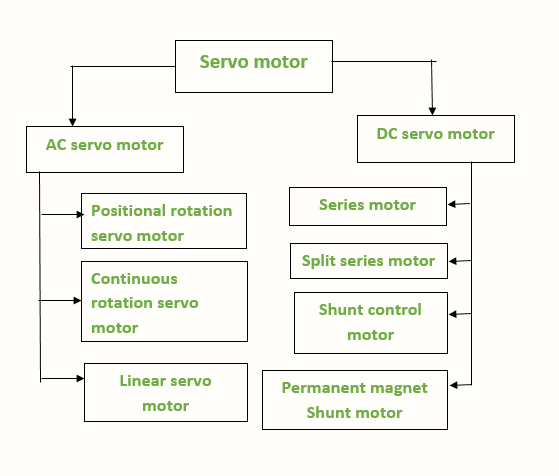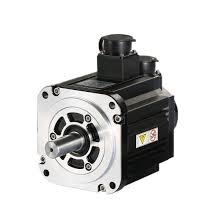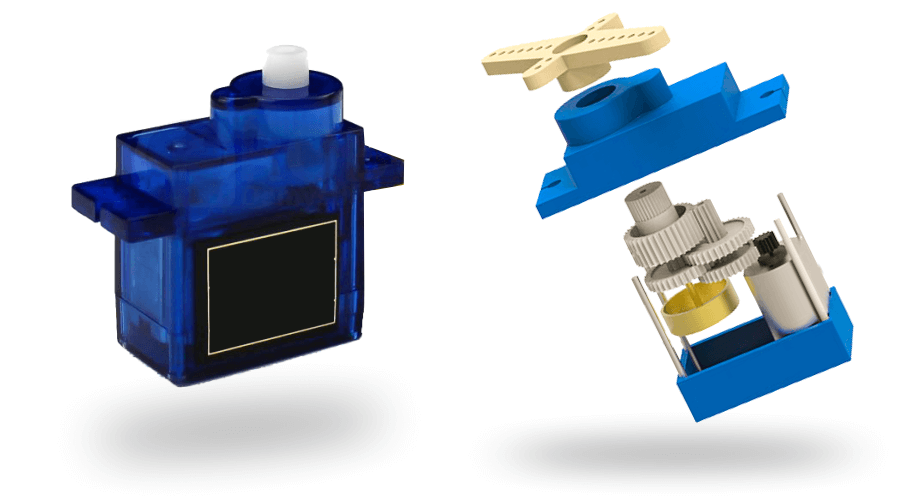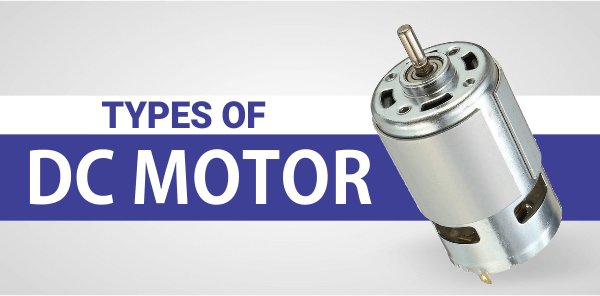Types of Servo Motor – AC Servo Motor and DC Servo Motor
Here you’ll find what are the different types of Servo Motors? And where they are used?

A servo motor is one of the widely used variable speed drives in industrial production, process automation and building technology worldwide. They intend and design to use in motion control applications which require high accuracy positioning, quick reversing and exceptional performance. In this blog, we are learning about the different types of servo motor to use in different field
What is Servo Motor?
The servo motor is a rotary actuator or linear actuator . It allows for precise control of angular or linear position, velocity and acceleration. It consists of a suitable motor coupled to a sensor for position feedback. It also requires a relatively sophisticated controller. The working principle of the servo motor and electromagnetic motor are same except the structure and the function are dissimilar. The standard servo motor uses the plastic gear whereas the high power servo motor uses the metal gear.
They are suitable for many applications due to the progress of the microprocessor, power transistor & high precision control. they include three wires power, ground, and control. Based on the size and outline, these motors are used in various applications. The most frequently used servo motor is RC servo motor which is mostly used in hobby applications. Mainly, this motor includes affordability, simplicity, and consistency.
MUST READ BLOG POSTS ON SERVO MOTOR:
What are the Types of Servo Motor?
Generally, there are two main types of this motor based on the supply used for its function. They are AC servo motors & DC servo motors. Check the below flow chart for the types of servo motor.
In brief, types of servo motor,
1. AC Servo Motor
An ac servo motor includes an encoder. The controller uses this encoder to give the feedback as well as closed loop control. To achieve more torque, theses motors have superior designs. Mostly, an AC servo motor uses in robotics, automation, CNC equipment, and many more applications.
-
Positional rotation servo motor
In positional rotation motor, the output of the shaft in motor rotates with 180 degrees. This type of motor mainly comprises includes physical stops that places in the gear mechanism to prevent rotating outside to protect the rotation sensor. The positional rotation servo motor uses in robots, aircraft, toys, controlled cars, & many more applications.
-
Continuous rotation servo motor
Continuous rotation servo motor is quite related to the common positional rotation servo motor. But it can go in any direction indefinitely. The control signal, rather than set the static position of the servo, is understood as the speed and direction of rotation. The range of potential commands sources the servo to rotate clockwise or anticlockwise. Also, it will change the speed, depending on the command signal. This type of motor uses in a radar dish if you are riding one on a robot or you can use one as a drive motor on a mobile robot.
-
Linear Servo motor
Linear servo motor is similar to positional rotation servo motor. It has an extra gears and with an extra gears, it alters the o/p from circular to back-and-forth. These servo motors are not simple to find, but sometimes you can find them at hobby stores where they use as actuators in higher model airplanes.
2. DC Servo Motor
Generally, the DC servo motor includes a DC source separately in the field of the armature winding. The motor can be controlled by managing the field current or the armature current. Both the armature control and field control have benefits. This motor offers a quick and accurate response to begin or end command signals because of the small armature inductive reactance. They utilize in several devices and numerically controlled equipment.
-
Series servo motor
The series servo motors include high starting torque as well as draws huge current. The speed regulation of this motor is very less. Turnaround can be attained by overturning the field voltage polarity using split series field winding.
-
Split series servo motor
A split series motors can function as an individually energized field controlled motor. The motor armature supplies with a stable current supply. This motor has a common curve with torque speed. This specifies high stall torque & a fast decline in torque by amplifying in speed.
-
Shunt Control Motor
The shunt control motor includes two windings such as field windings and armature windings. Field windings are located on the stator whereas the armature windings are located on the rotor of machine. In a DC shunt motor, the two windings connect across the DC source in parallel.
-
Permanent Magnet Shunt Motor
It is a permanent excitation motor wherever a stable magnet supplies the field. The motor performance is same to armature controlled permanent field motor.
Thus, this is all about types of servo motors. This motor is a division of servomechanism. Mostly, they couple with some type of encoder for providing positioning, speed feedback as well as some fault correcting apparatus which activates the supply signal.
We at Robu.in hope that you found it interesting and that you will come back for more of our educational blogs.










